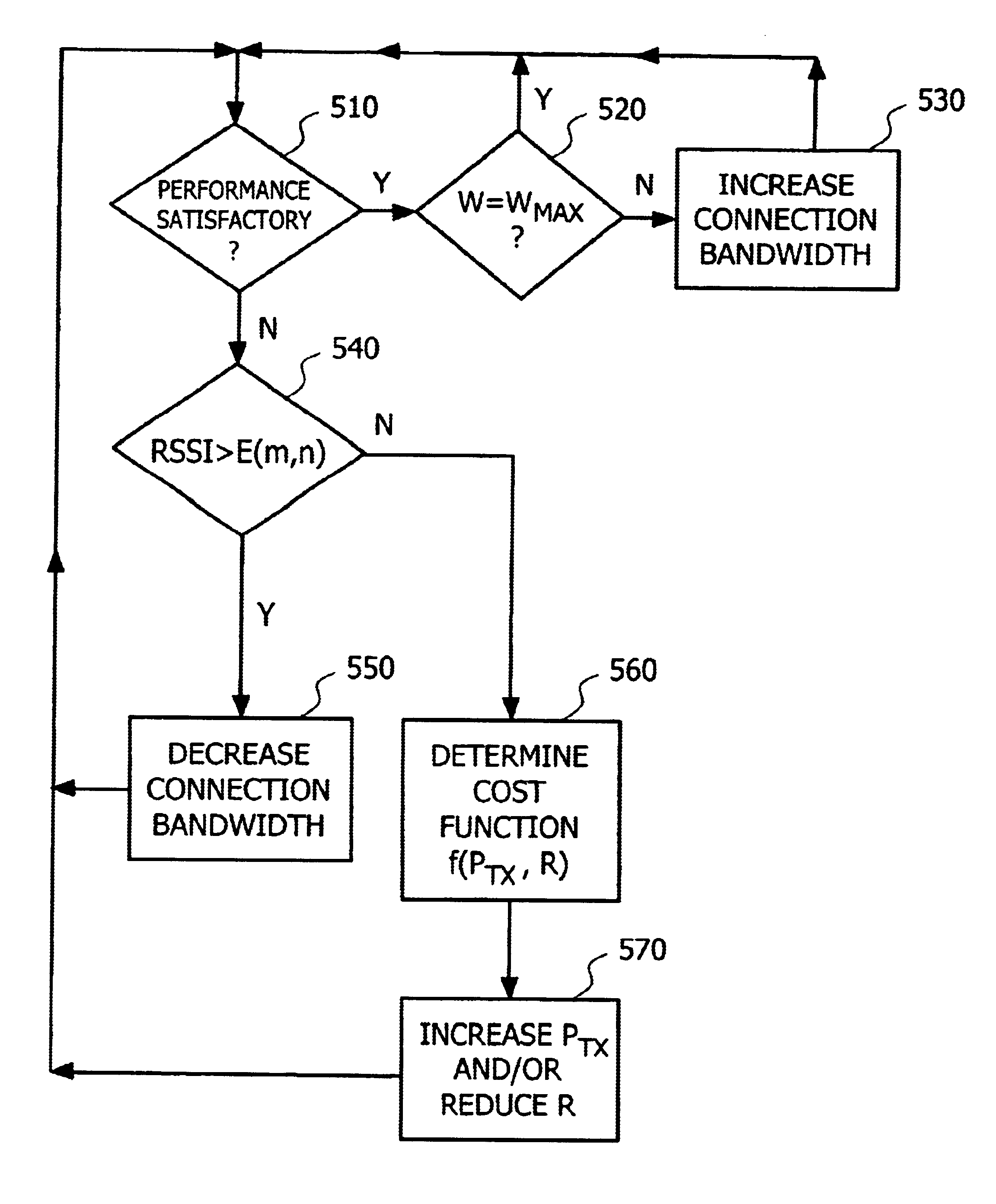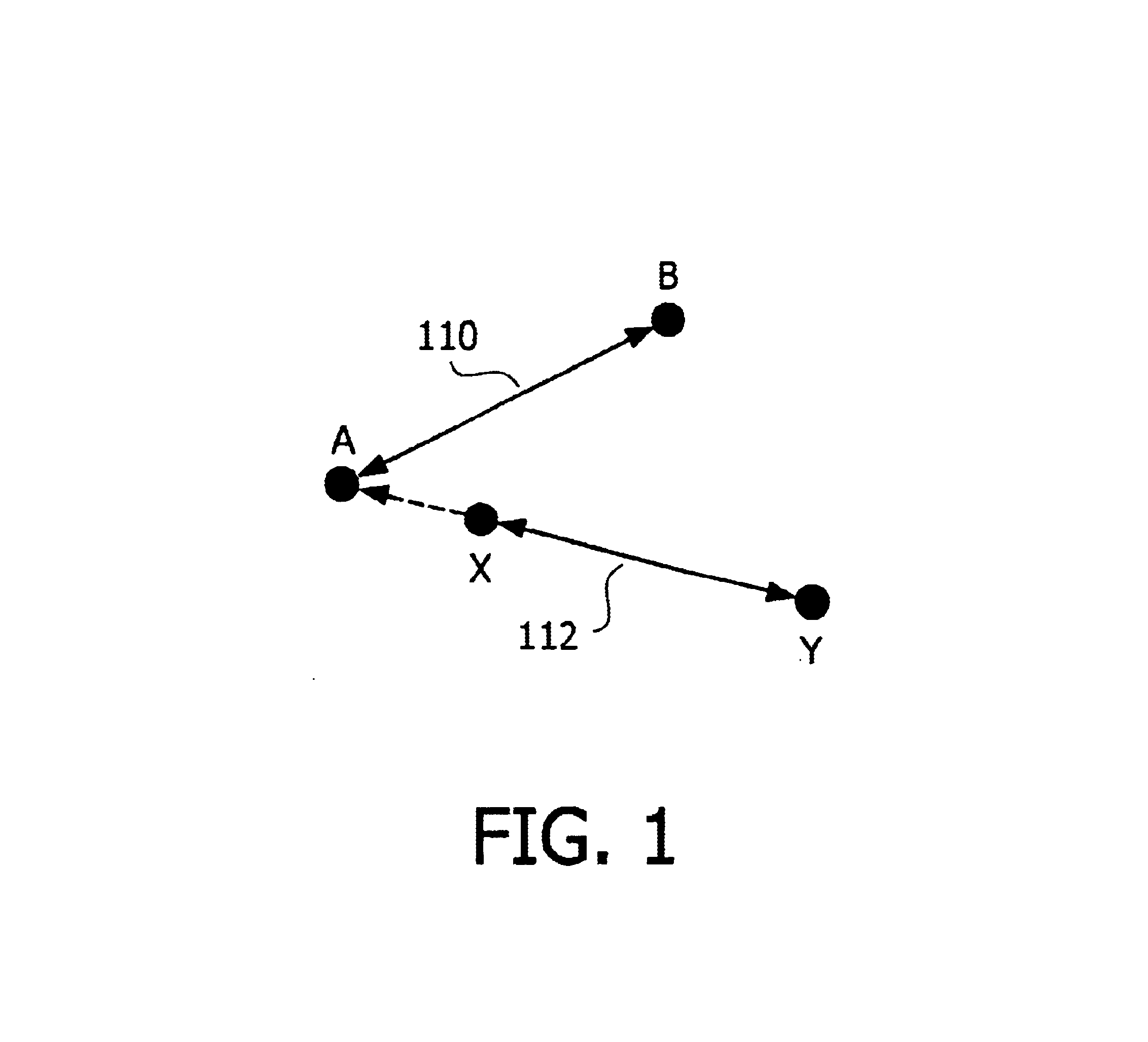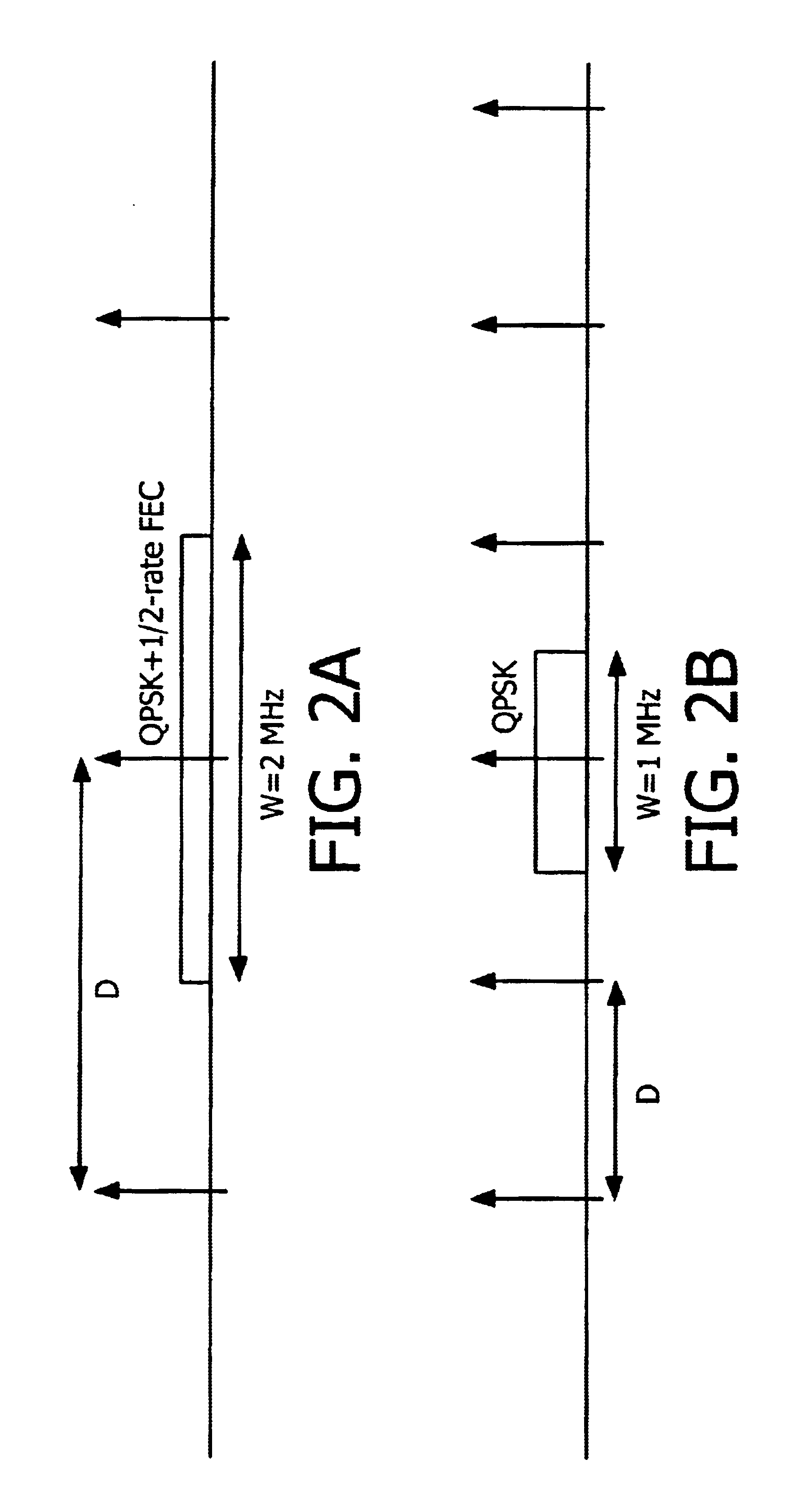System and method for link adaptation in communication systems
a communication system and link technology, applied in the field of electronic communication systems, can solve the problems of interference in fdma systems, limited interference from adjacent channels, etc., and achieve the effects of reducing the amount of coding, increasing the channel bandwidth, and increasing the signaling ra
- Summary
- Abstract
- Description
- Claims
- Application Information
AI Technical Summary
Benefits of technology
Problems solved by technology
Method used
Image
Examples
Embodiment Construction
[0029]Existing digital cellular communication networks use an access scheme that combines principles of FDMA / TDMA or FMDA / CDMA. Therefore, the radio spectrum is always separated into a number of frequency bands. The licensed spectrum reserved for the cellular service is divided into multiple radio sub-bands of fixed bandwidth. Multiple channels can be implemented on each frequency sub-band using TDMA or CDMA access techniques. Maintaining a fixed channel bandwidth simplifies hardware design and allows network designers to implement frequency reuse planning techniques to reduce co-channel interference in the network.
[0030]Absent significant co-channel interference, link adaptation techniques may be used to reduce problems caused by transmission range and signal fading. For example, if the power level of a received signal decreases due to increased transmission distance or due to fading, link adaptation techniques allow the connection to continue, albeit at a lower S / N value. In these...
PUM
 Login to View More
Login to View More Abstract
Description
Claims
Application Information
 Login to View More
Login to View More - R&D
- Intellectual Property
- Life Sciences
- Materials
- Tech Scout
- Unparalleled Data Quality
- Higher Quality Content
- 60% Fewer Hallucinations
Browse by: Latest US Patents, China's latest patents, Technical Efficacy Thesaurus, Application Domain, Technology Topic, Popular Technical Reports.
© 2025 PatSnap. All rights reserved.Legal|Privacy policy|Modern Slavery Act Transparency Statement|Sitemap|About US| Contact US: help@patsnap.com



